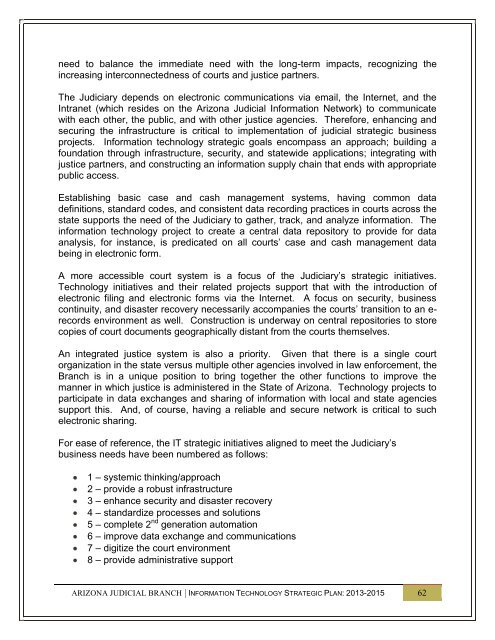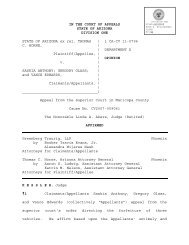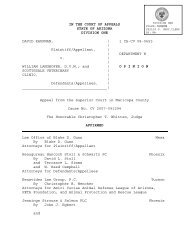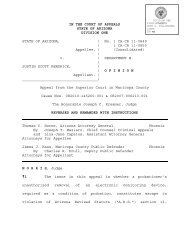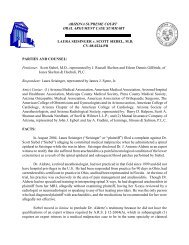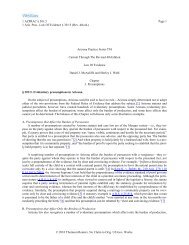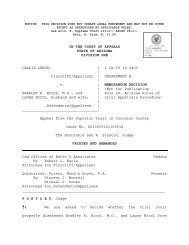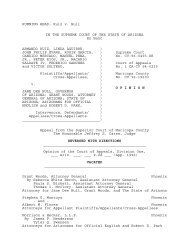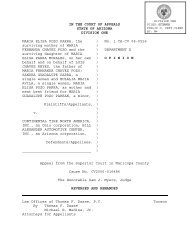Print Version - Arizona Judicial Department
Print Version - Arizona Judicial Department
Print Version - Arizona Judicial Department
Create successful ePaper yourself
Turn your PDF publications into a flip-book with our unique Google optimized e-Paper software.
need to balance the immediate need with the long-term impacts, recognizing the<br />
increasing interconnectedness of courts and justice partners.<br />
The Judiciary depends on electronic communications via email, the Internet, and the<br />
Intranet (which resides on the <strong>Arizona</strong> <strong>Judicial</strong> Information Network) to communicate<br />
with each other, the public, and with other justice agencies. Therefore, enhancing and<br />
securing the infrastructure is critical to implementation of judicial strategic business<br />
projects. Information technology strategic goals encompass an approach; building a<br />
foundation through infrastructure, security, and statewide applications; integrating with<br />
justice partners, and constructing an information supply chain that ends with appropriate<br />
public access.<br />
Establishing basic case and cash management systems, having common data<br />
definitions, standard codes, and consistent data recording practices in courts across the<br />
state supports the need of the Judiciary to gather, track, and analyze information. The<br />
information technology project to create a central data repository to provide for data<br />
analysis, for instance, is predicated on all courts’ case and cash management data<br />
being in electronic form.<br />
A more accessible court system is a focus of the Judiciary’s strategic initiatives.<br />
Technology initiatives and their related projects support that with the introduction of<br />
electronic filing and electronic forms via the Internet. A focus on security, business<br />
continuity, and disaster recovery necessarily accompanies the courts’ transition to an erecords<br />
environment as well. Construction is underway on central repositories to store<br />
copies of court documents geographically distant from the courts themselves.<br />
An integrated justice system is also a priority. Given that there is a single court<br />
organization in the state versus multiple other agencies involved in law enforcement, the<br />
Branch is in a unique position to bring together the other functions to improve the<br />
manner in which justice is administered in the State of <strong>Arizona</strong>. Technology projects to<br />
participate in data exchanges and sharing of information with local and state agencies<br />
support this. And, of course, having a reliable and secure network is critical to such<br />
electronic sharing.<br />
For ease of reference, the IT strategic initiatives aligned to meet the Judiciary’s<br />
business needs have been numbered as follows:<br />
1 – systemic thinking/approach<br />
2 – provide a robust infrastructure<br />
3 – enhance security and disaster recovery<br />
4 – standardize processes and solutions<br />
5 – complete 2 nd generation automation<br />
6 – improve data exchange and communications<br />
7 – digitize the court environment<br />
8 – provide administrative support<br />
ARIZONA JUDICIAL BRANCH | INFORMATION TECHNOLOGY STRATEGIC PLAN: 2013-2015 62


